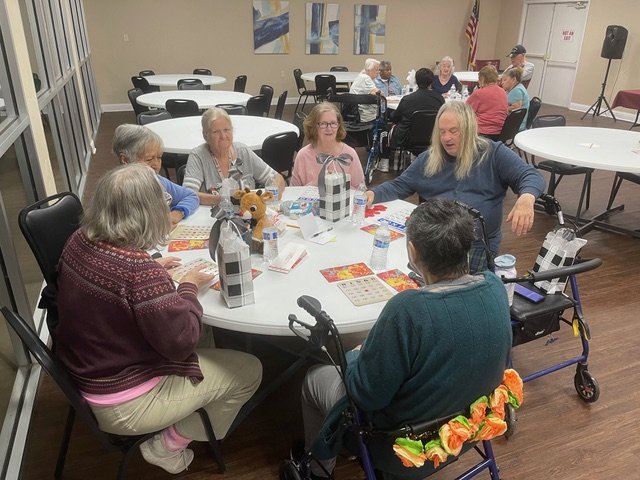Incarnational Theology
/by Rev. Eric Folkerth
“Our God, Heaven cannot hold Him, nor earth sustain;
Heaven and earth shall flee away, when He comes to reign.
In the bleak midwinter, a stable place sufficed
The Lord God Almighty, Jesus Christ.”
These words first penned by Christina Rossetti, are from one of my favorite Advent/Christmas hymns, “In the Bleak Midwinter.” Although the words are more than 100 years old now, they still resonate. The above verse, of course, reminds me specifically of our Advent theme: “Heaven and Earth.”
In quick succession —years ago now— I made several discoveries that rocked my world and deepened my understanding of Christ’s incarnation.
The first discovery has to do with this very hymn and an additional verse not found in our United Methodist Hymnal; possibly excluded for reasons I will describe in just a moment.
Rossetti has just finished with the above verse where she describes the vast and holy incongruity between earthly things and heavenly things. And yet, with this “missing verse,” things are about to become very, very earthy indeed:
“Enough for Him, whom cherubim, worship night and day,
A breastful of milk, and a mangerful of hay;
Enough for Him, whom angels fall before,
The ox and ass and camel which adore.”
The mystery, hope and promise of incarnation is that earth *was* enough for Jesus.
“Earthiness” is, in fact, at least one-half of the point of incarnation itself. Incarnation is the unity — a mysterious connection and unity— between the most holy, sacred and mysterious movings of God’s Spirit, and also the very real, tangible and earth-bound terrestrial sphere of our planet.
BOTH God AND Human.
Both/and.
Not “either/or.”
And as we discussed in the column last week, Jesus wants us to see and understand God in “the least of these.” (Matthew 25)
But directly connected to this is seeing God in the most “earthy” of situations, too. And that’s what this verse gets at. Here Rossetti describes our God inside the “mangerful of hay.”
And manger hay is, well, generally full of animal dung.
It’s not “clean.”
It’s not “pristine.”
It’s shockingly gross at times.
But even more human here is Rossetti’s intentional description of a “breastful of milk.”
What an incredibly intimate, maternal image.
She’s obviously talking about Mary, and she’s obviously talking about breastfeeding.
And if I had to guess, this is the piece —more than dirty hay— that led to this verse’s exclusion from our United Methodist hymnal.
So, here is the question:
Is it possible, in your own spiritual understanding of Jesus, Mary, and his birth, to imagine Mary breastfeeding Jesus?
Because that’s the clear and tender motherly image here.
So this is what led to the second shocking discovery: That throughout history, many artists in the classical period *did* depict Mary breastfeeding Jesus!
Along with this column, you’ll find perhaps the earliest known example, from the Roman Catacombs. This is literally perhaps the very earliest known depiction of Mary. And icons, paintings, and frescos of Mary breastfeeding were quite common until at least the 13th Century and continue to this day.
There are many more, and if you are interested in finding them, feel free to use Google. I haven’t posted them because my strong hunch is some of you reading this might indeed find them offensive.
But here is the question for all of us who seek to follow Jesus; here is where I’d like to push your spiritual understanding:
WHY would they be offensive?
Clearly, many Christians with a more robust incarnational understanding of God have embraced such images centuries ago.
In every age we Christians seek to sanitize and sacralize the message of Jesus to the point that we very often remove all traces of Jesus’ human wholeness. And in doing so, we tend to create a false dualism between our lives, our bodies, our earthly experiences and what God wants us to understand about the true connection between the two.
In the name of God, we are forever “Otherizing” foreigners, People of Color, Immigrants, the LGBTQ community; tragically, often all done in the name of Jesus, and by those who *claim* to follow an Incarnational Savior.
But Jesus came to break down those walls between “Heaven and Earth,” and remind us that we see God in every single human being. We see God not only on our best days, but also on our worst.
We see God not only when we are strong and confident, but also when we are lying vulnerable on the hospital gurney.
We see God not only when things are going right, but when everything feels like it’s going wrong.
God can take our most vulnerable human moment, because Godself became human for our sake, and for this sake of this big, complicated, world of ours.
As I like to remind you, Frederick Buechner once noted that one of the more consistent mistakes we human beings make is to “try and be more holy than God.”
But, as Rossetti writes in one of her other classic hymns, “Love Came Down at Christmas.”
And this was to challenge us to remember that our lives, our world —every single part of it— contains not only what we see as most unworthy, but also some piece of the very holiness of God at the very same moment.
This is another level of the power of incarnational seeing.






